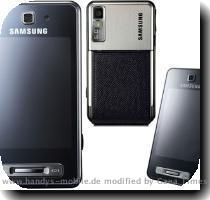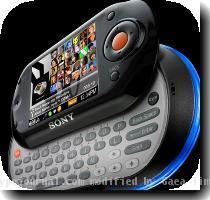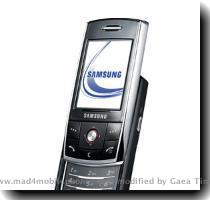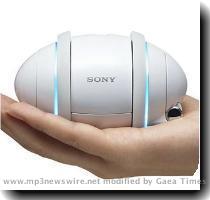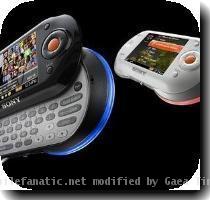Kindle-killers? A flood of e-readers on the way, some featuring touch and even video chat
By Rachel Metz, APThursday, January 7, 2010
E-reader boom kindles a variety of new options
LAS VEGAS — When most people think of electronic book readers, Amazon’s thin, white Kindle probably springs to mind. But that could be about to change.
A cascade of e-readers will hit the market this year, taking the devices far beyond gray-scale screens with features like touch navigation and video chatting — and probably lowering prices, too.
It’s happening as other gadgets, such as mobile phones and tablet computers, give people even more choices for diving into their favorite books. Perhaps the only downside is worrying you might buy an e-reader from a company that won’t stick around.
This week, nearly two dozen companies that make the devices or deliver reading material to them are showing products at the International Consumer Electronics Show, the first time it has devoted a section to e-books.
In a good sign for the mainstream status e-book companies hope to achieve, they are clustered at a prime location in the Las Vegas Convention Center often taken over by the likes of Microsoft Corp. And Amazon isn’t even at the exhibition.
E-books make up a tiny portion of book sales, but their popularity is growing rapidly. According to the Consumer Electronics Association, which organizes the trade show, 2.2 million e-readers were shipped to stores in 2009, nearly four times as many as the year before. This year, the group expects 5 million will be shipped.
“It’s an incredible growth category,” said Jason Oxman, senior vice president of industry affairs at the electronics association.
E-readers from Sony and other companies were around before Amazon released the Kindle in 2007, but the Kindle was the first to offer wireless downloading of books, making impulse buys easier.
Since the Kindle debuted at $399, Amazon has lowered the price to $259 and lured buyers with inexpensive material, such as new releases of books for about $10 each. On Christmas Day, Amazon sold more e-books than physical copies for the first time.
To keep up, Barnes & Noble has come out with its $259 Nook, and Sony Corp. has stayed in the game with its Readers, with an entry-level model at $200. Each offers hundreds of thousands of titles, with relatively few exclusives — publishers have shown little interest in favoring one device over another.
Now other companies are getting in the game. Samsung Electronics Co., the leading maker of phones and TVs in the U.S., will launch an e-reader this year, too.
Interead Ltd. already sells a $249 device called the COOL-ER and has two new models at the trade show: a smaller, lighter version called the Compact and a touch-screen model called the Connect that can download books from Interead’s online store if the user is in a Wi-Fi hot spot.
Interead plans to launch both in the first quarter. It also plans to roll out a model with access to a “3G” cellular network, for use outside Wi-Fi locations, by summer.
EnTourage Systems Inc. is showing off a $490 e-reader at the trade show that has two screens — a 10.1-inch color touch-screen on the right and a 9.7-inch black-and-white display on the left. That screen is controlled with a stylus.
Like the Nook, enTourage’s device, called the eDGe, will run Google Inc.’s Android operating software, so you can use the color screen to browse the Web and watch videos. There will even be a small camera for video chats.
Customers will be able to buy books from enTourage’s e-store over Wi-Fi, and the company expects to release a version with service through a wireless carrier. The eDGe is expected to ship to customers in February.
The price is twice what the smaller version of the Kindle costs. But Doug Atkinson, enTourage’s vice president of marketing and business development, believes people will gravitate to his company’s device because it combines Web browsing and book reading.
Success in this market might require more than selling a specific gadget, though. Amazon, Barnes & Noble and Sony, for example, also sell electronic books for people to read on other devices, such as the iPhone.
That gives those companies a way to profit if the most popular reading device turns out to be, say, a tablet-style computer like the one Apple is expected to launch this year.
Another company hedging its bets this way is Skiff LLC, an e-reading company developed by media conglomerate Hearst Corp. that hopes to funnel content to devices from various producers.
Skiff is focused on trying to make newspapers and magazines look good on e-readers — which is difficult because they have more complex layouts than the single column of text we’re used to seeing on the pages of a book. Skiff also plans to include ads.
The first Skiff product, the Skiff Reader, will have an 11.5-inch, gray-scale touch screen that can download material from Skiff’s online store. The company is partnering with Spring Nextel Corp. for wireless delivery. It’s expected to be available this year, though Skiff has not announced a price or named the device’s manufacturer.
The Kindle can already deliver publications like Newsweek and The Wall Street Journal. Yet Skiff’s president, Gil Fuchsberg, thinks people will be drawn to his company’s service because it’s dedicated to newspaper and magazine content.
Indeed, NPD Group technology analyst Ross Rubin says his firm’s research has found people are more interested reading magazines on e-readers than books.
While the choices are overwhelming, shoppers stand to benefit.
“The great thing about competition,” Oxman said, “is it inspires innovation among the manufacturers.”
Tags: 2010 Consumer Electronics Show, Arts And Entertainment, Books And Literature, Communication Technology, Consumer Electronics, Consumer Electronics Show, E-book Readers, Events, Las Vegas, Nevada, North America, Personnel, Products And Services, Sony, United States, Wireless Networking, Wireless Technology
